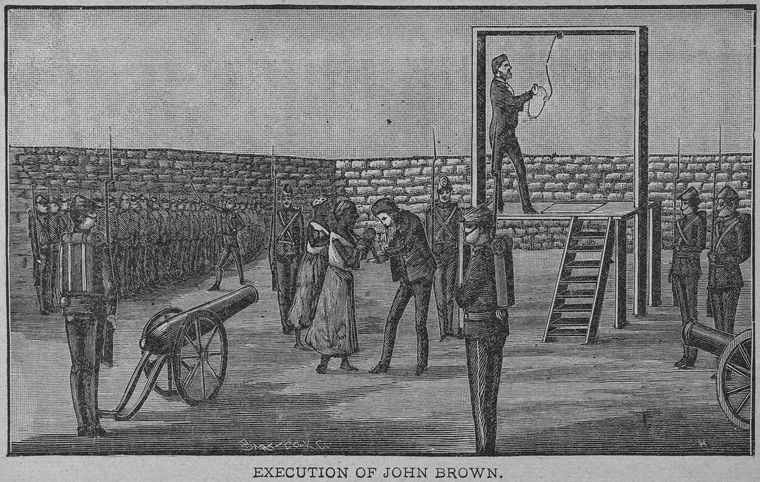A Feeling Of Hope: The Legacy of John Brown
Posted by Pete on May 9th 2020
The radical abolitionist, John Brown, was born 220 years ago today.

Made famous by his leadership of the fateful raid on Harpers Ferry in 1859, John Brown has become somewhat synonymous with futile courage.
Brown despised slavery in the United States but, unlike some, he believed it could only be defeated by force.

John Brown advocated the use of armed insurrection to overthrow the institution of slavery in the United States
This belief put him at odds with the pacifism of other leaders in the contemporary abolitionist movement, like Frederick Douglass.
But it also spoke to many slaves and former-slaves, not least Harriet Tubman, who believed they had a right to defend themselves against the institutionalized brutality of American slavery.
For Brown, this belief came to a head in October 1859 when he attacked and occupied a federal armory in Harpers Ferry, Virginia.
Douglass had advised Brown against the action, calling it futile, and futile it apparently proved.

Brown and his comrades, black and white, had hoped to spark a mass slave revolution across the South – such as had happened in Haiti at the end of the 18 th century – with their attack on Harpers Ferry, but no such uprising came about.
Few took up Brown’s call to arms, and the abolitionist rebels were quickly put down by US Marines under the command of future Confederate warlord, Robert E. Lee.
John Brown was arrested and executed for treason by the Virginia government on 2 nd December 1859.
Abolitionists, pacifist and otherwise, remembered him as a martyr to the cause of freedom.
Harriet Tubman, who Brown had affectionately nicknamed ‘General Tubman’ declared,
But martyrs tend to spring up amid hopelessness, and this was the case for US abolitionism in the 1850s.
The decade began with the Fugitive Slave Act of 1850, by which the North sold out, agreeing to forcibly return slaves who made a break for the free states back to their masters in the South.
And it now came to an end with the decisive failure of John Brown’s attempted slave rebellion in Virginia.
But the desperate nature of abolition soon vanished.
Less than a year after Brown’s execution, Abraham Lincoln was elected president, followed by the secession of the South.

In 1862, the Emancipation Proclamation affirmed the freedom of slaves in states under Confederate control, and 1863 brought the decisive Union victory at Gettysburg during the American Civil War.
Then in 1865, the Thirteenth Amendment to the US Constitution was passed, outlawing slavery in America.
A few months later, Robert E. Lee, who’d taken John Brown’s surrender at Harpers Ferry, himself surrendered the Confederate Army of Northern Virginia.
And, 155 years ago today on 9 th May 1865, Andrew Johnson (who’d succeeded to the presidency after Lincoln’s assassination) was able to declare the Southern insurrection ended.
In a wonderful twist of fortune, the forces of American slavery were defeated on what would have been John Brown’s 65 th birthday.
If there’s a lesson to take from this, it’s the suddenness with which hope can spring from despair.
For many of us today, things can appear pretty desperate: an insurgent Far Right, the climate crisis, and now a pandemic, too.
But desperation can turn to hope in an instant, so hang on in there, we shall overcome!
